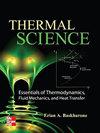高能激光辐照下模拟月球岩石破坏特性及机理的实验研究
IF 1.1
4区 工程技术
Q4 THERMODYNAMICS
引用次数: 1
摘要
月岩岩心钻孔载荷大、散热差,导致破岩难度大、钻孔取样效率低。激光破岩作为一种新的辅助破岩方法,有望应用于月球岩石钻探中的摄动取样。揭示岩石在激光照射下的破裂特征和机理是实现激光辅助月球岩石采样的重要基础。以玄武岩为模拟月球岩样,从宏观到微观分析了激光照射下玄武岩的力学响应特性,探讨了不同激光功率和不同照射时间下玄武岩的破坏规律。结果表明:激光辐照下试样的破坏主要表现为局部岩石熔化和动态裂纹扩展,试样表面温度服从高斯分布特征;激光功率对岩石弱化程度的影响大于照射时间。激光照射岩石能显著降低岩石强度,对提高岩石破岩效率和减少原位扰动有明显效果。预计将为今后协助月球岩石钻探和取样提供理论和技术支持。本文章由计算机程序翻译,如有差异,请以英文原文为准。
Experimental study on characteristic and mechanism of simulated lunar rock destruction under high energy laser irradiation
The large load and poor heat dissipation of moon rock core drilling leads to the difficulty of rock breaking and low drilling and sampling efficiency. As a new auxiliary rock breaking method, laser rock breaking is expected to be applied to perturbation sampling in lunar rock drilling. Revealing the fracture characteristics and mechanism of rock under laser irradiation is an important basis for realizing laser-assisted lunar rock sampling. Basalt was used as simulated lunar rock sample, and its mechanical response characteristics under laser irradiation were analyzed from macro to micro point of view, and the failure law under different laser power and different irradiation time was explored. The results show that the failure of the sample under laser irradiation is mainly characterized by local rock melting and dynamic crack propagation, and the surface temperature of the sample follows the characteristics of Gaussian distribution. The laser power has a greater influence on the degree of rock weakening than the irradiation time. Laser irradiation of rocks can significantly reduce rock strength, and has obvious effects on improving rock breaking efficiency and reducing in situ disturbance. It is expected to provide theoretical and technical support for assisting lunar rock drilling and sampling in the future.
求助全文
通过发布文献求助,成功后即可免费获取论文全文。
去求助
来源期刊

Thermal Science
工程技术-热力学
CiteScore
2.70
自引率
29.40%
发文量
399
审稿时长
5 months
期刊介绍:
The main aims of Thermal Science
to publish papers giving results of the fundamental and applied research in different, but closely connected fields:
fluid mechanics (mainly turbulent flows), heat transfer, mass transfer, combustion and chemical processes
in single, and specifically in multi-phase and multi-component flows
in high-temperature chemically reacting flows
processes present in thermal engineering, energy generating or consuming equipment, process and chemical engineering equipment and devices, ecological engineering,
The important characteristic of the journal is the orientation to the fundamental results of the investigations of different physical and chemical processes, always jointly present in real conditions, and their mutual influence. To publish papers written by experts from different fields: mechanical engineering, chemical engineering, fluid dynamics, thermodynamics and related fields. To inform international scientific community about the recent, and most prominent fundamental results achieved in the South-East European region, and particularly in Serbia, and - vice versa - to inform the scientific community from South-East European Region about recent fundamental and applied scientific achievements in developed countries, serving as a basis for technology development. To achieve international standards of the published papers, by the engagement of experts from different countries in the International Advisory board.
 求助内容:
求助内容: 应助结果提醒方式:
应助结果提醒方式:


